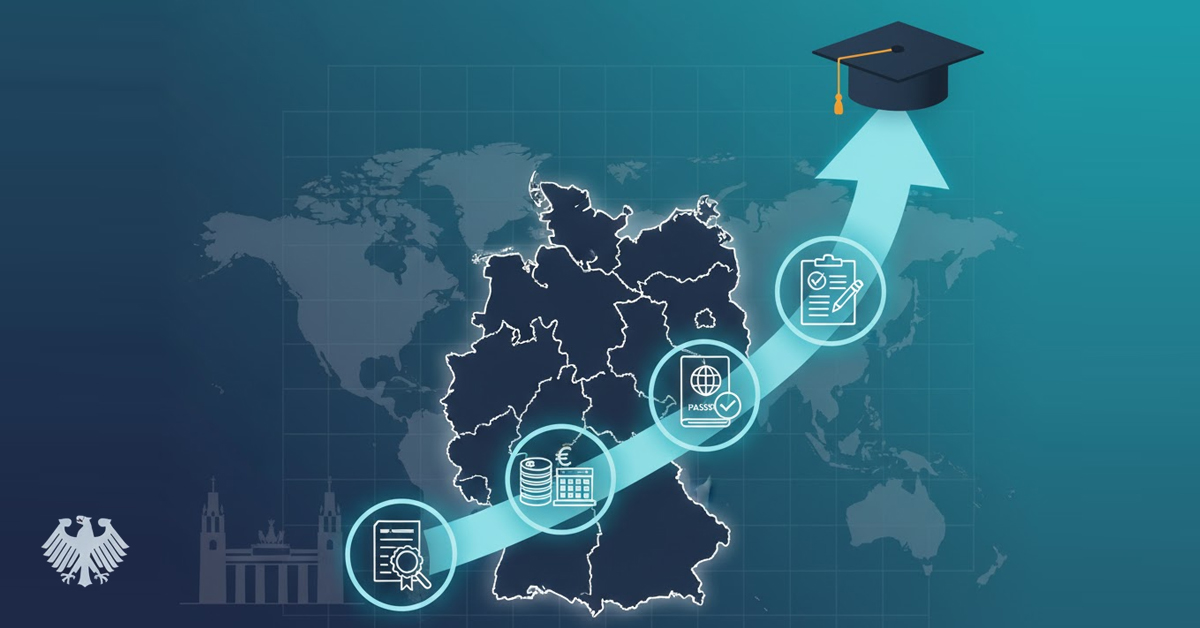Education loans have become one of the most important tools for Indian students who wish to study in India or abroad. But with so many banks and financial institutions offering loans, it can be hard to know which rules to trust. That’s where the RBI guidelines for Education Loan come in.
The Reserve Bank of India (RBI) ensures that students get fair treatment, transparent loan terms, and enough flexibility to repay. The RBI works through the Indian Banks’ Association’s Model Education Loan Scheme (MELS), which standardises loan rules for all banks.
Understanding RBI Guidelines for Education Loan
The RBI issues guidelines to make sure all banks and lenders follow fair practices when offering education loans. These guidelines help students understand what to expect before applying.
The Model Education Loan Scheme (MELS)
The MELS framework, first introduced by the Indian Banks’ Association under the RBI’s direction, creates uniformity across banks. It ensures students face similar conditions everywhere, no matter which lender they approach.
Key features of the MELS 2025 update:
- Transparent interest rates linked to the RBI’s repo rate.
- Wider coverage for domestic and overseas courses.
- Inclusion of OCI (Overseas Citizens of India) cardholders.
- Simplified repayment options for underprivileged students.
Key RBI Guidelines for Education Loan Eligibility and Amounts
Under the latest RBI guidelines for Education Loan, banks must follow uniform eligibility rules. Students can apply for loans for recognised courses in India or abroad, whether it’s for undergraduate, postgraduate, or professional programs.
Key Eligibility Highlights
- Indian citizens and OCI cardholders are eligible.
- Admission confirmation from a recognised institution is mandatory.
- A co-applicant (usually a parent or guardian) is required.
- The loan covers tuition, hostel, travel, and other related expenses.
| Education Loan Type | Maximum Loan Amount | Collateral Requirement | Coverage |
| Domestic Education Loan | Up to ₹10–15 lakh | Not required up to ₹7.5 lakh | Tuition, books, travel |
| Abroad Education Loan | Up to ₹1.5 crore | Required above ₹7.5 lakh | Tuition, living, travel, insurance |
Eligibility Criteria for Domestic Education Loans
The RBI guidelines for Education Loan eligibility for Indian students include:
- Applicants must be an Indian citizen.
- Admission confirmed in recognised Indian universities, colleges, or professional institutions.
- A loan can cover full-time professional, technical, or degree programs.
- Parents or guardians act as co-applicants.
- Collateral not required up to ₹7.5 lakh.
Eligibility Criteria for Abroad Education Loans
As per the latest RBI guidelines for Education Loan, applicants must:
- Be an Indian citizen or OCI cardholder.
- Have admission confirmation from a recognised foreign university.
- Pursue professional, postgraduate, or technical courses.
- Maintain a strong academic record.
- Have a co-applicant with stable income.
Also Read: Types of Abroad Education Loans for Abroad Studies
RBI Guidelines on Collateral and Security for Education Loans
The RBI guidelines for Education Loan define how much collateral or security is needed, depending on the loan size. This ensures that students without property or from high-income families still get access to funds.
Collateral Rules
| Loan Amount (₹) | Collateral Requirement | Security Type |
| Up to ₹4 lakh | No collateral | Co-obligation by parent or guardian |
| ₹4–7.5 lakh | Third-party guarantee | Could be from a relative or friend |
| Above ₹7.5 lakh | Tangible collateral | Property, FD, insurance, or mutual funds |
Moratorium Period and Repayment Terms under RBI Education Loan Guidelines
A moratorium period is the time given to a student before loan repayment starts. According to RBI guidelines for Education Loan, the moratorium covers the course duration plus 12 months after completion.
Repayment Terms
- Repayment starts after the moratorium ends.
- Loan tenure ranges from 10 to 15 years.
- Simple interest or partial payments can be made during the course to reduce future EMIs.
- Early repayment or pre-closure is allowed without penalty.
RBI Guidelines for Education Loan Interest Subsidy Schemes
The RBI guidelines for education loan interest subsidy ensure fairness and financial support.
Major Government-Backed Schemes
- Dr. Ambedkar Central Sector Scheme
- For students from the OBC and EBC categories.
- 100% interest subsidy during the moratorium period.
- Applicable for studies in India and abroad.
- For students from the OBC and EBC categories.
- State-Level Schemes
- GUEEDC (Gujarat): Loans at 4% interest for unreserved but economically weaker students.
- Kerala State Education Loan Subsidy: Partial reimbursement of interest for overseas education.
- GUEEDC (Gujarat): Loans at 4% interest for unreserved but economically weaker students.
RBI Guidelines for Education Loan Settlement and Restructuring
The RBI guidelines for education loan settlement protect students facing genuine repayment difficulties due to job delays, health issues, or economic instability.
Key Provisions
- Restructuring: Banks can modify repayment terms based on financial hardship.
- Interest Concession: Students may receive temporary rate reductions or waivers.
- Case-by-Case Review: Each situation must be assessed individually before default status is assigned.
- Loan Waivers: Considered in extreme cases under government direction.
Tax Benefits on Education Loans as per RBI and Income Tax Act
The Education Loan tax benefits under Section 80E of the Income Tax Act allow borrowers to save money on interest payments.
Section 80E Highlights
- Deduction on the entire interest paid (not principal).
- Benefit available for up to 8 years or till the interest is paid off, whichever comes earlier.
- Applicable to both students and co-applicants.
- Covers domestic and overseas education loans.
Also Read: Get the Best Student Loans with Low Interest Rates for Studying Abroad
Grievance Redressal Mechanism under RBI for Education Loans
The RBI guidelines for Education Loan grievance redressal ensure transparency and accountability.
- Step 1: Contact the bank’s branch manager or education loan officer.
- Step 2: Escalate to the bank’s Grievance Redressal Officer or Zonal Head.
- Step 3: If unresolved within 30 days, approach the RBI Complaint Management System (CMS) online.
- Step 4: Finally, file a complaint under the Banking Ombudsman Scheme for free legal resolution.
Impact of RBI Guidelines 2025 on Abroad Education Loan Eligibility and Financing
The RBI guidelines for abroad Education Loan in 2025 have made overseas education funding smoother, fairer, and more transparent.
Key Changes and Impact
- Inclusion of OCI Cardholders: Now eligible for loans under the same rules as Indian citizens.
- Flexible Collateral Options: Mutual funds, insurance, and FDs can be pledged as security.
- Transparent Interest Rates: Banks must display effective annualised rates upfront.
- Reduced Margin Money for EWS Students: Margin contribution can go down from 15% to 5%.
Steps to Apply for an Education Loan Following RBI Guidelines
Following the RBI Education Loan application process ensures a smooth and transparent experience.
- Identify your course and check which banks offer loans under MELS guidelines.
- Ensure you meet RBI’s criteria for nationality, admission, and co-applicant requirements.
- Collect admission letters, fee estimates, KYC proofs, academic records, income proofs, and collateral papers if needed.
- Apply online or visit the bank branch. Many banks now offer paperless options.
- The bank verifies your details, assesses your creditworthiness, and issues a sanction letter.
- Funds are sent directly to your university or account based on the fee schedule.




